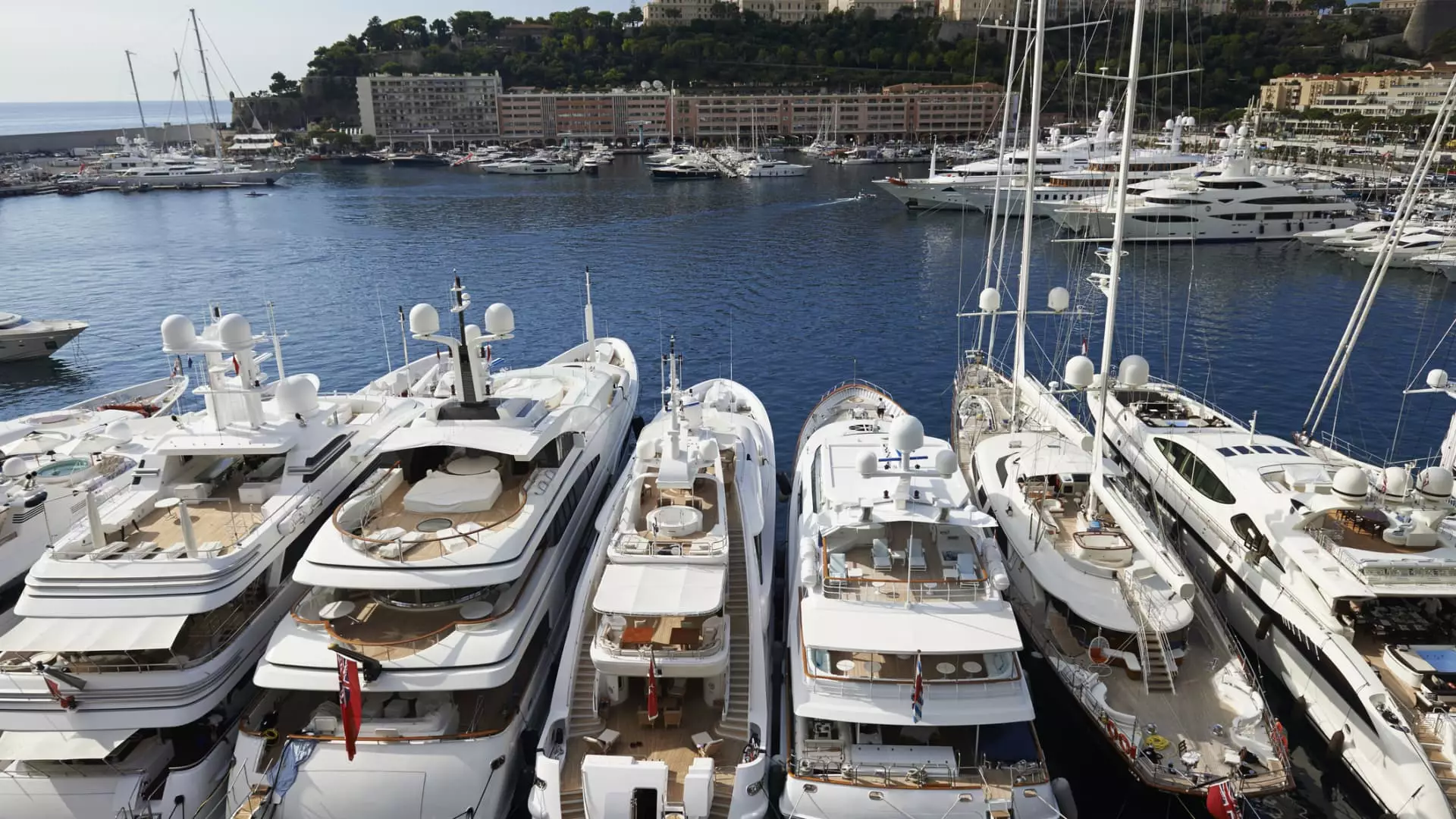The recent announcement of a 15% tariff on European-made recreational boats by the United States signals more than just a trade dispute; it marks a significant shift in the luxury yachting landscape. For decades, European yards have dominated the high-end yacht industry, crafting vessels that symbolize wealth and status. Now, with tariffs poised to increase their costs, both European manufacturers and American buyers find themselves at a crossroads. While some may argue that billionaires will shrug off additional costs, the reality reveals a more nuanced picture: the ripple effects could redefine how the super-rich acquire and own their luxury vessels.
European shipyards, often the gold standard of craftsmanship, are nervously recalculating their future. Their main export market—America—suddenly faces barriers that threaten to inflate prices and slash margins. The European Boating Industry’s alarmed statement underscores this concern: the tariffs threaten their survival in the lucrative U.S. market. For industry insiders, this isn’t just about immediate profit margins; it’s about preserving a centuries-old legacy of innovation and craftsmanship that now faces geopolitical turbulence.
For affluent American consumers, the story is equally complex. The standard perception that billionaires are impervious to tax hikes is only partially correct. While wealthy yacht buyers can typically afford the added 15%, the decision isn’t purely about price—it’s also about strategic financial planning. Many of these buyers are now forced to rethink their acquisition timelines, negotiate meticulously, or explore dodging the tax altogether. The practical impact? A subtle realignment of buying power, with some opting to wait or seek alternative routes to ownership.
Strategic Navigations: Dodging the Tariff and Reshaping Ownership
One of the most pervasive tactics to escape the new tariffs is ‘foreign flagging.’ Yacht owners can register their vessels in countries like the Cayman Islands, Malta, or Jamaica—jurisdictions with favorable treaties that allow vessels to enter U.S. waters without triggering tariffs. This loophole, while not entirely seamless, provides a significant financial advantage: savings on multimillion-dollar yachts, which can amount to hundreds of thousands or even millions of dollars. For the ultra-rich, this is a calculated risk worth taking, especially since the cost of foreign registration often pales in comparison to the added expense of the tariffs.
However, such strategies are not without complications. Special cruising permits and restrictions come with the territory, and for smaller vessels—those under 45 feet—the practicality diminishes. The economic calculus only favors this approach for larger yachts, exacerbating a divide between the elite ‘have-yachts’ and those who own smaller vessels that cannot avoid tariffs. This division could lead to an increase in the demand for U.S.-made yachts, giving local manufacturers a much-needed boost amid declining preowned yacht sales.
The shift in market dynamics might create an incentive for U.S. boat builders to ramp up production and marketing efforts. American manufacturers like Westport, Trinity, and Burger, seen as domestic alternatives to the European behemoths, stand to gain from the situation. If wealthy clients seek to avoid tariffs, they might pivot toward local options, provided those options meet their standards of opulence and customization. This could herald a renaissance for American boatbuilding, but only if the industry adapts swiftly.
Meanwhile, the preowned yacht market, which experienced a post-pandemic boom, is poised for a potential revival. Owners of U.S.-registered yachts may find their vessels in higher demand, pushing up prices and inventory turnover. This scenario positions the U.S. as a more attractive hub for luxury yacht ownership, fundamentally shifting the geographic and economic flow of the global high-end yachting industry.
The Political and Economic Ramifications of a Wealthy Elite Escape Plan
By facilitating strategies like foreign flagging, the U.S. government effectively introduces a value-distorting element into the luxury yacht market. It creates an environment where the wealthy can selectively avoid paying what they see as unreasonable taxes, further highlighting the inequality inherent in tax policies that target high-net-worth individuals. This dynamic, in turn, fuels debate on the fairness of such tariffs—whether they truly serve the broader economic interests or simply entrench wealth among an already privileged class.
Furthermore, the potential for increased domestic production and demand presents an intriguing opportunity for American policymakers and manufacturers. If the U.S. can position itself as an alternative powerhouse for luxury yachting, it might reduce reliance on European craftsmanship and foster a more resilient domestic industry. But this hinges on political will, fiscal policies, and strategic investments that can capitalize on these shifting currents rather than be hamstrung by bureaucratic inertia or protectionist tendencies.
In essence, the introduction of tariffs does more than shake up the yacht market; it exposes the fragility of a globalized luxury trade and the lengths the wealthy will go to preserve their lifestyle. While some see opportunity in disruption, most recognize the underlying risks: increased costs for consumers, strained international relations, and a potential surge in underground or loophole-driven behaviors. It remains to be seen whether this new era will lead to a renaissance of American manufacturing or deepen the divide between the privileged and the rest.

